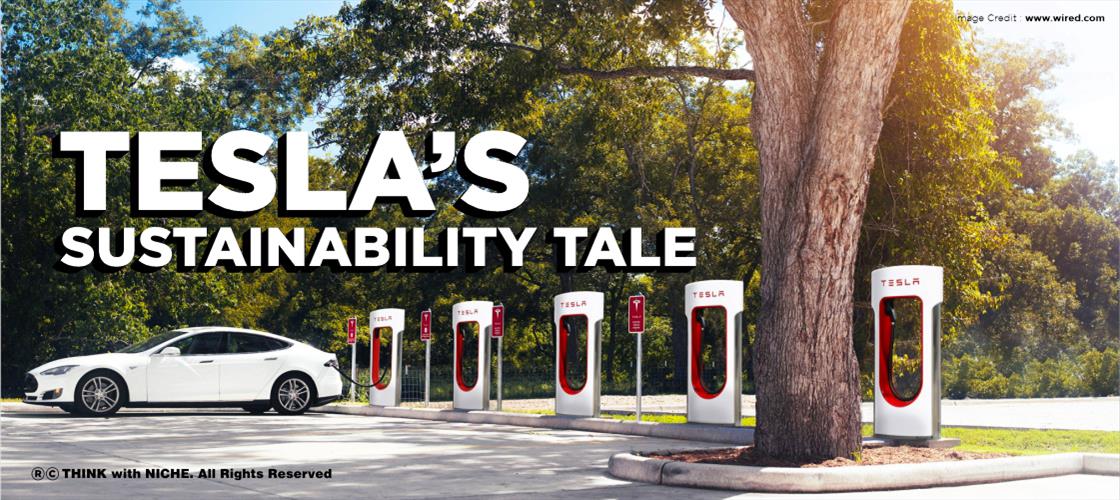
Post Highlights
Since the launch of the first Tesla electric vehicle (EV), consumers have been curious in how EVs compare to traditional internal combustion engines in terms of total carbon footprint (ICEs). We all know that Elon Musk's Tesla vehicles emit less pollution from the tailpipe. Tesla's environmental tale, on the other hand, is not as black-and-white as it appears. #ThinkWithNiche
Rather than focusing on short-term goals and rapid growth, as many traditional car companies do, Tesla chose to focus on two major sustainability imperatives from the start: the transition to a carbon-neutral economy and the urgent need for a new sustainable transportation business model based on zero emissions.
Both businesses and homeowners may
create solar energy with solar panels and store it in a Powerwall
battery, thanks to Tesla. Tesla also claims to be working to extend the
life of its batteries and ensure that they are appropriately recycled.
Lack Of Transparency
According to a recent analysis completed by
Arabesque (not publicly available), the car firm is among the 15% of
the world's major companies that do not publish their overall
greenhouse-gas emissions across 14 indices. GM and Ford, on the other
hand, are significantly more transparent. Arabesque is an asset
management firm that allocates capital based on ESG (environmental,
social, and governance) and sustainability criteria. It says that ESG
policies reflect a company's strategy, corporate purpose, and managerial
abilities. Tesla's carbon emissions are displayed as graphs rather than
numbers, hinting that the figures are not accurate. They also don't say
whether these graphs include Scope 1 or Scope 2 emissions, or what
percentage of operations they cover. The company's lack of transparency
about its carbon emissions and ambitions raises concerns about its
commitment to a sustainable future. The corporation has also refused to
commit to carbon targets, so their plan to trade automobiles for the
energy-intensive cryptocurrency bitcoin seems comprehensible.
Cobalt Batteries Adding Extra Price
However, the most recent generation of
batteries, particularly Tesla batteries that strive to completely
eliminate cobalt, are extremely recyclable. Not only can 90 percent of
the battery be recycled, but it can also be used for energy storage for
another 20 years or more after its usable life in a Tesla. The cost of
these batteries increases the vehicle's price, making it unaffordable
for the great majority of customers. How can sustainability be
incorporated with only a few Tesla car owners?
Domestic Workers Not In Good State
Tesla has been hit with a slew of legal
issues and charges. The majority of them are related to China's policies
regarding supply-chain worker conditions. Despite Musk's claims that
working conditions have improved, there remains a gap between employee
feedback and the lack of a detailed report.
Conclusion: Tesla has established a number of protocols, both in its plants and in the areas where it works, to attain a zero-emissions future. They're doing fantastic work in the field of solar energy. Their business is still unsustainable. It must endeavor to eliminate Cobalt, be honest about its carbon emissions, and improve the lives of its employees.
Comments
Post a Comment